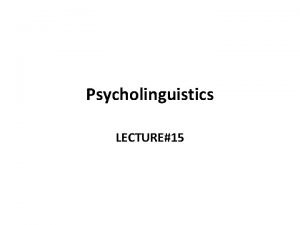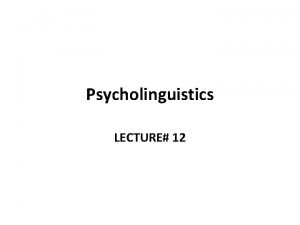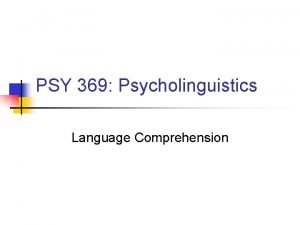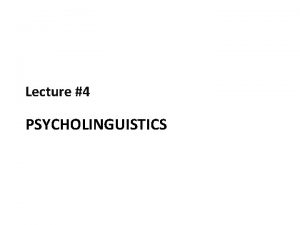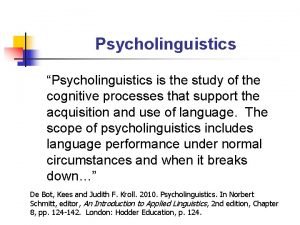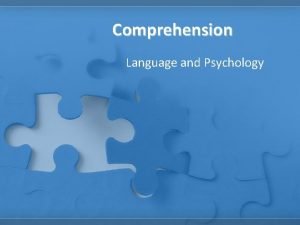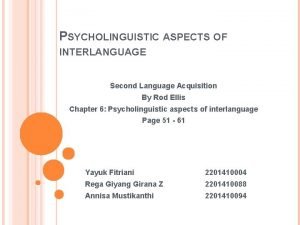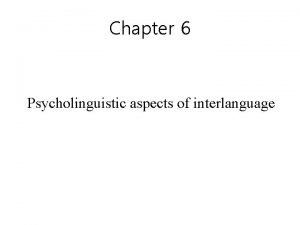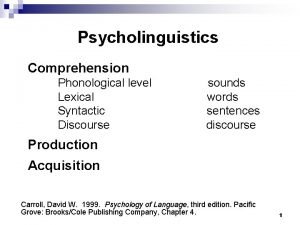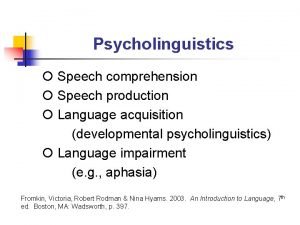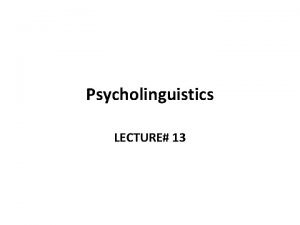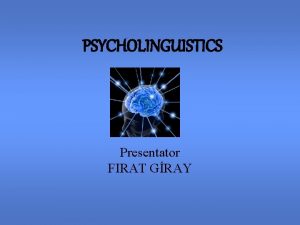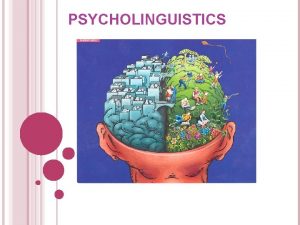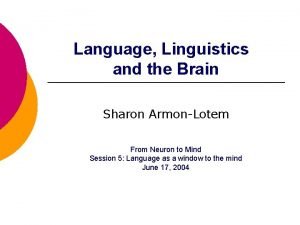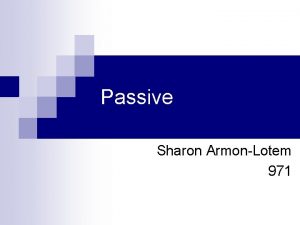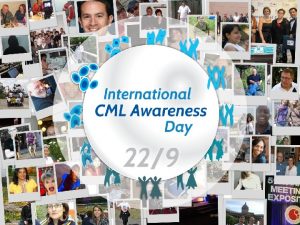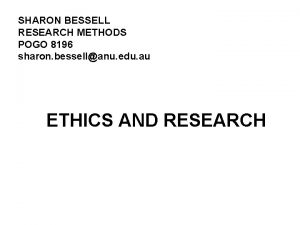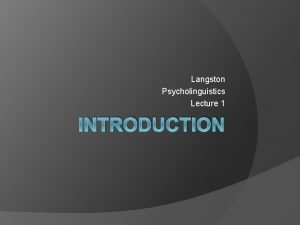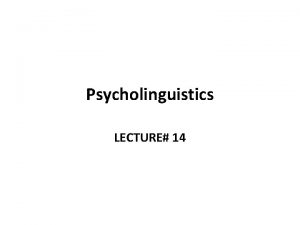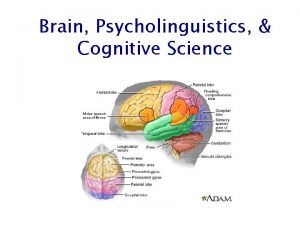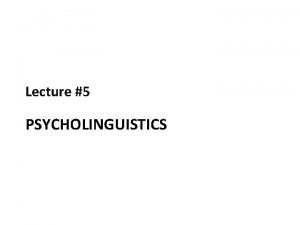Psycholinguistics Research Methods Introduction 922 Sharon ArmonLotem Psycholinguistics



















- Slides: 19

Psycholinguistics & Research Methods – Introduction 922 Sharon Armon-Lotem

Psycholinguistics – how language is done • Processing (of words and sentences) • Language acquisition • Neurolinguistics

Language processing Can you read the following paragraph? (from http: //weblogs. asp. net/rosherove/archive/ 2003/09/14/27471. aspx)

• Aoccdrnig to a rscheearch at an Elingsh uinervtisy, it deosn't mttaer in waht oredr the ltteers in a wrod are, the olny iprmoetnt tihng is taht frist and lsat ltteer is at the rghit pclae. The rset can be a toatl mses and you can sitll raed it wouthit porbelm. Tihs is bcuseae we do not raed ervey lteter by it slef but the wrod as a wlohe.

And in Hebrew (http: //www. mrccbu. cam. ac. uk/~mattd/Cmabrigde/)

Speech perception: High amplitude sucking (HAS) method (Figure from Eimas et al. , 1971)

• Head turn method http: //psych. rice. edu/mmtbn/language/s. Percepti on/infant. Headturn_h. html • Identification = discrimination and categorization • Discrimination – head turn for different category • Categorization – head turn for same category • Categorical perception: Voice onset time (VOT) https: //www. youtube. com/watch? v=USIg. SFgzw ww (1: 56 -3; 52)

Miller and Nicely 1955 (figure from Clark and Clark (1977)) Identification of CV syllables in the presence of white noise.

Active and Passive Theories – from https: //www. youtube. com/watch? v=USIg. SFg zwww (starting on 8: 30)

Our lexicon • How do we store words in our mind? • Are sender and sister the same? What about under and unlike?

Priming effect (e. g. , Lexical decision, Semantic verification) a. A bat is a mammal b. A cat is a mammal c. A bat is a bird

Lexical ambiguity a. The rabbi married my sister b. The rabbi married my brother c. The rabbi married my sister and her boyfriend

Syntactic Ambiguities Why is this sentence ambiguous? How do we compute the interpretation? How do we choose which interpretation to assign to this sentence? • The tuna can hit the boat. רובים עם בשוטרים יורים • הם

Garden path sentences • Read sentence (a). How did it feel? a. Since Jay always walks a mile seems like a short distance to him. • Now read it again. Concentrate on your eye movement.

• Now do the same for (b). b. The horse raced past the barn fell. • Why did we fall into the same trap again? What does it tell us about trees? • And some Hebrew: c. בואדי מטיילת חולצה

Language acquisition What can we learn from the following examples? a. Ani lo menaketet et hashulxan b. Ha-kosem ilem et ha-arnav

And the following dialogue? Matan: lama at mashta ota axshav? Mother: ani mashka ota ki hi cmea. Matan: Gal lo perax. Perax mashkim.

Brain and Language (neurolinguistics) a. Q: What happened to make you lose your speech? A: Head, fall. Jesus Christ, me no good, str, str … oh Jesus … stroke

b. Q: What brings you to the hospital? A: Boy. I’m sweating. I’m awful nervous. I can’t mention the tarripoi, a month age, I’ve done a lot better, you know what I mean. I have to run around, trbbin and all that sort of stuff.
 Retroreflectivity inspections
Retroreflectivity inspections Sql code 818
Sql code 818 Decreto n.o90.922/1985
Decreto n.o90.922/1985 Brazil communication no. 35.922
Brazil communication no. 35.922 Direct wax pattern
Direct wax pattern What is psycholinguistics
What is psycholinguistics Language loss in psycholinguistics
Language loss in psycholinguistics Psycholinguistics scope
Psycholinguistics scope Comprehender adalah
Comprehender adalah History of psycholinguistics
History of psycholinguistics Psycholinguistics definition and examples
Psycholinguistics definition and examples Psycholinguistics
Psycholinguistics History of psycholinguistics
History of psycholinguistics Interlanguage in psycholinguistics
Interlanguage in psycholinguistics Spreading activation psychology
Spreading activation psychology Psycholinguistics aspects of interlanguage
Psycholinguistics aspects of interlanguage Psychological aspects of interlanguage
Psychological aspects of interlanguage Comprehension of words in psycholinguistics
Comprehension of words in psycholinguistics Psycholinguistics
Psycholinguistics Garden path sentence
Garden path sentence






